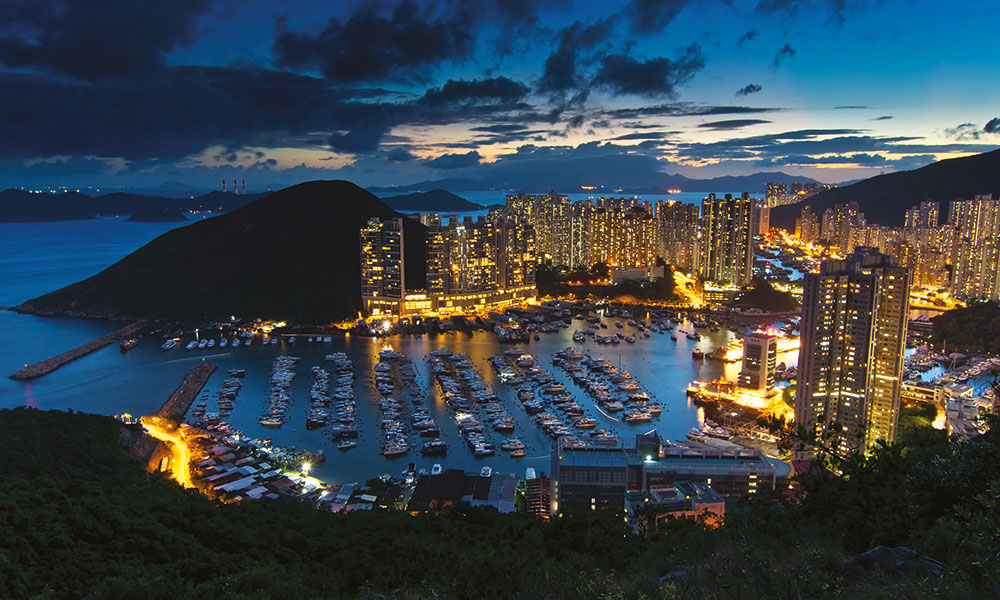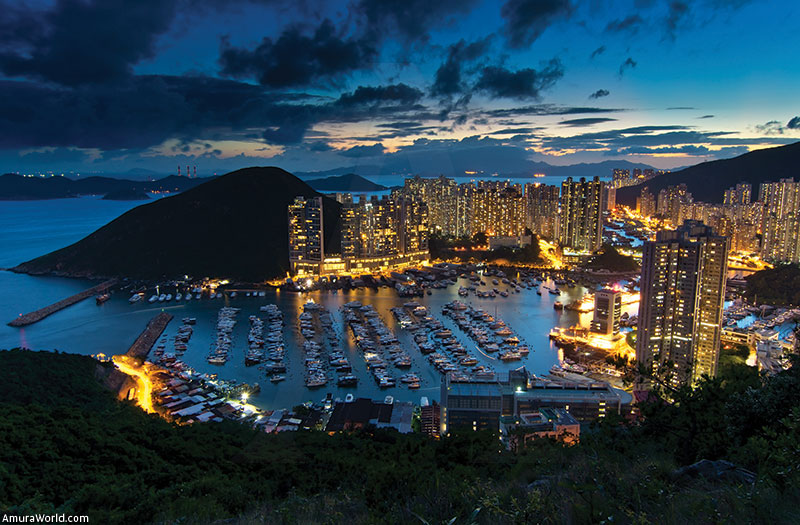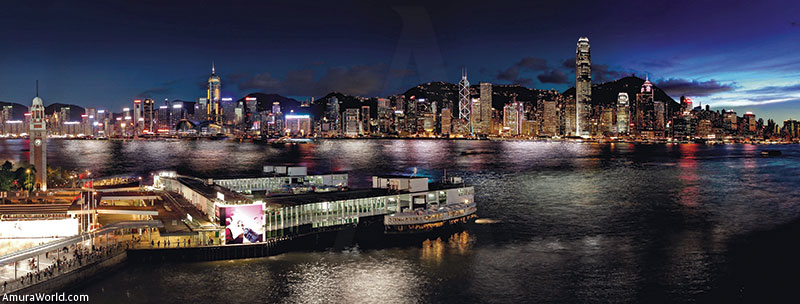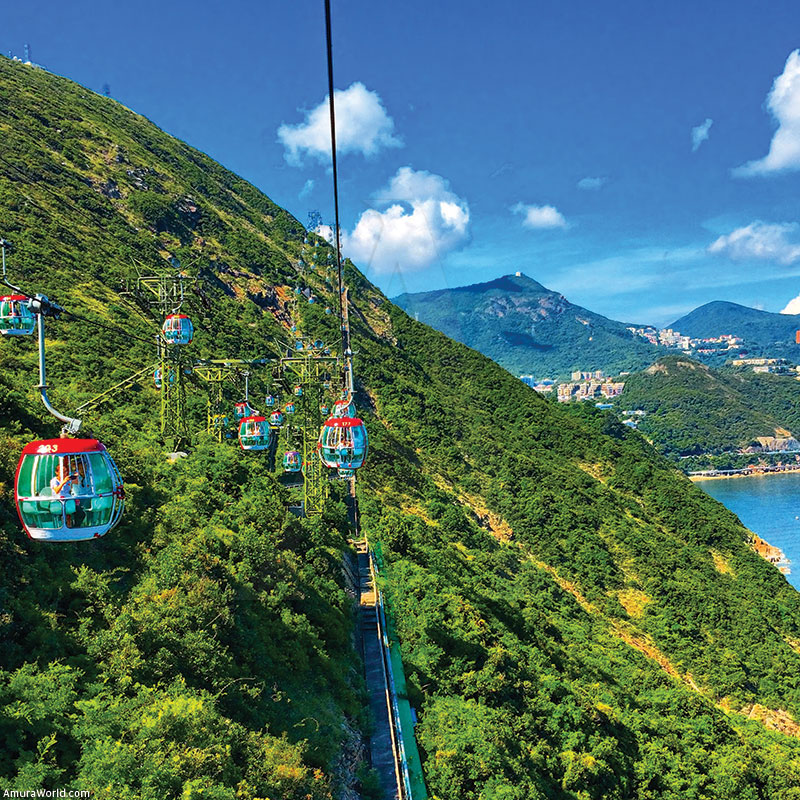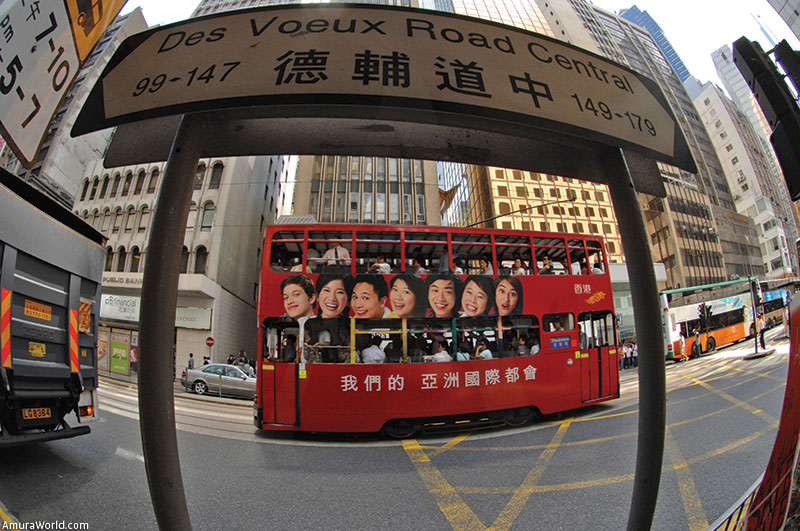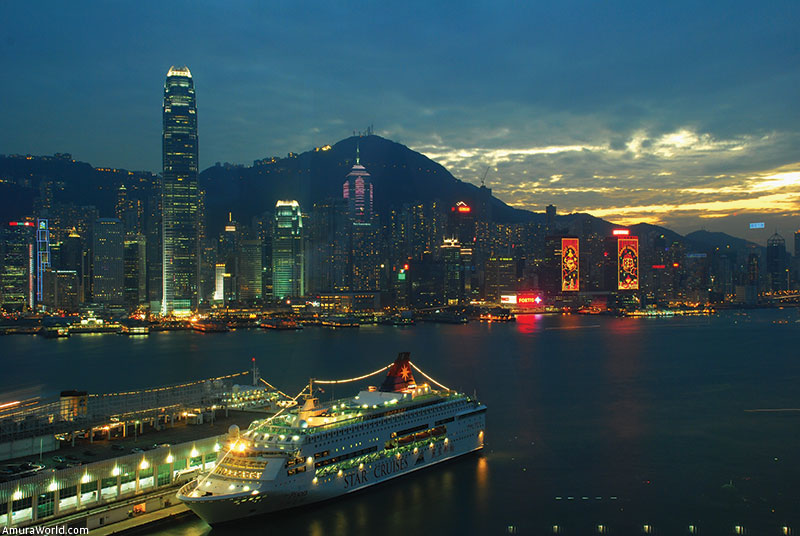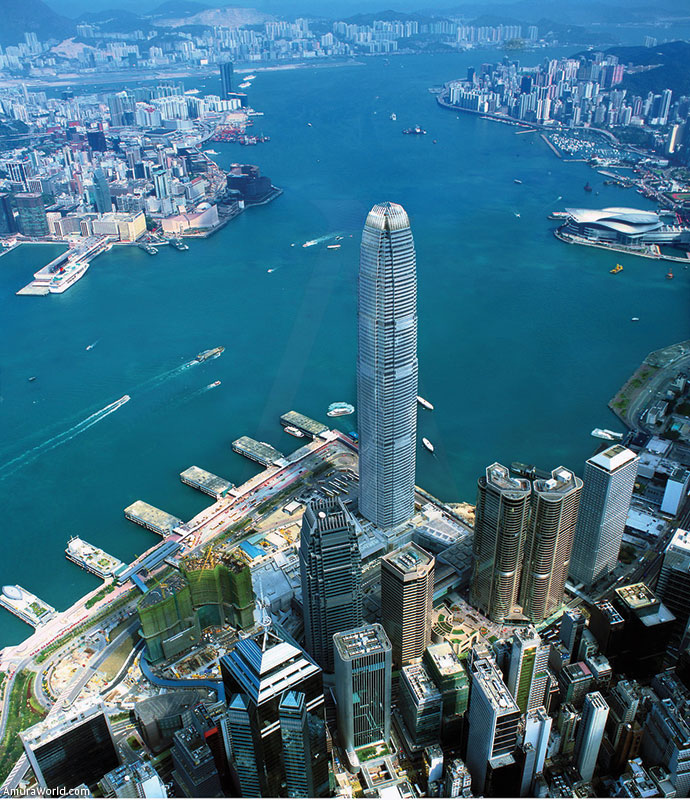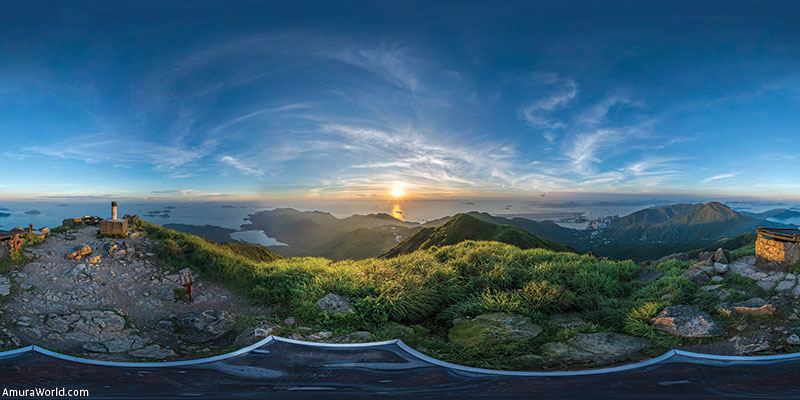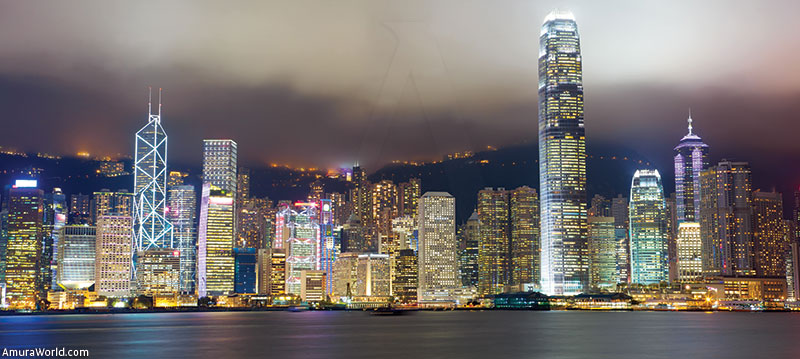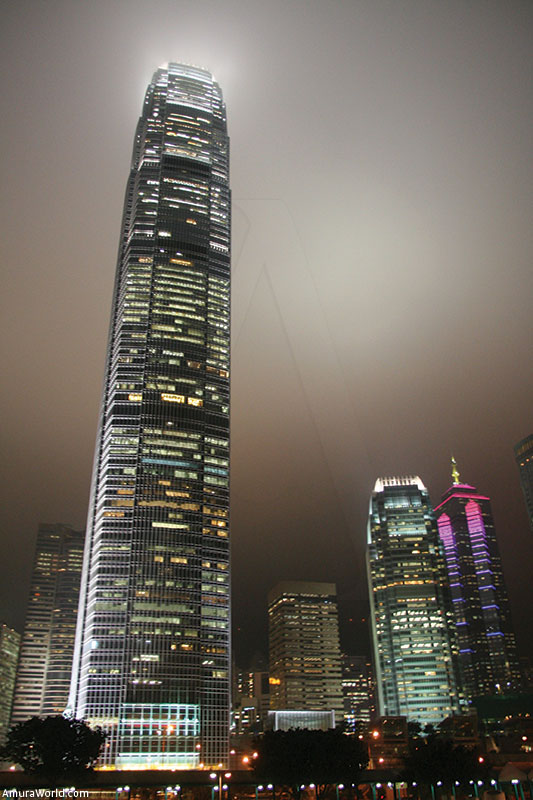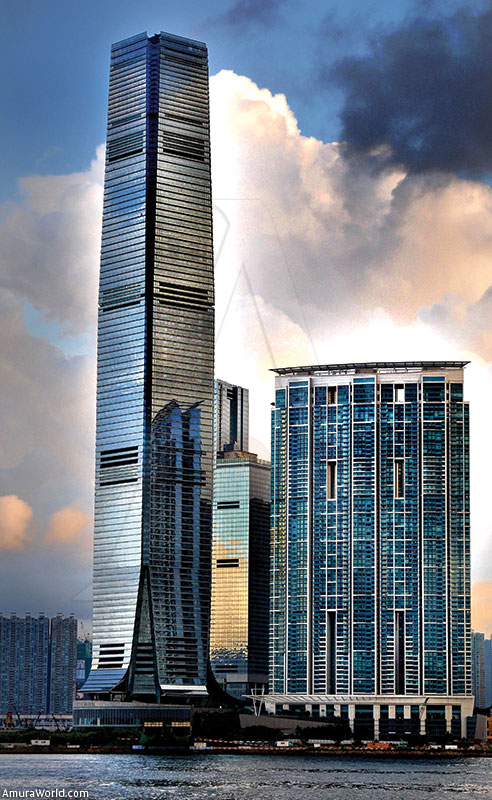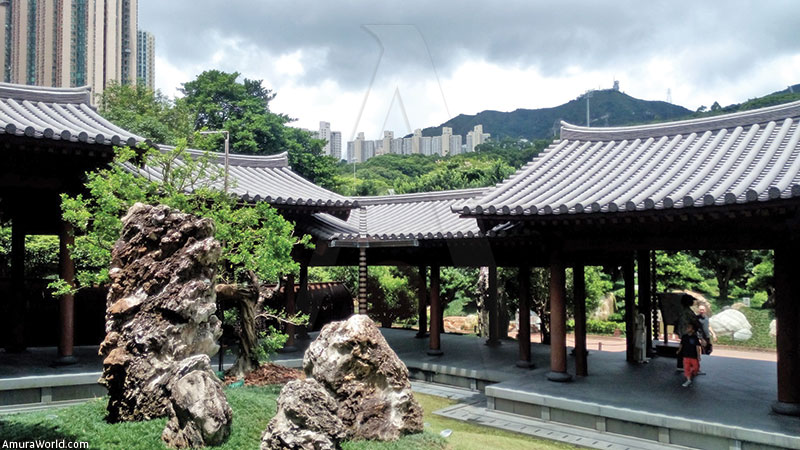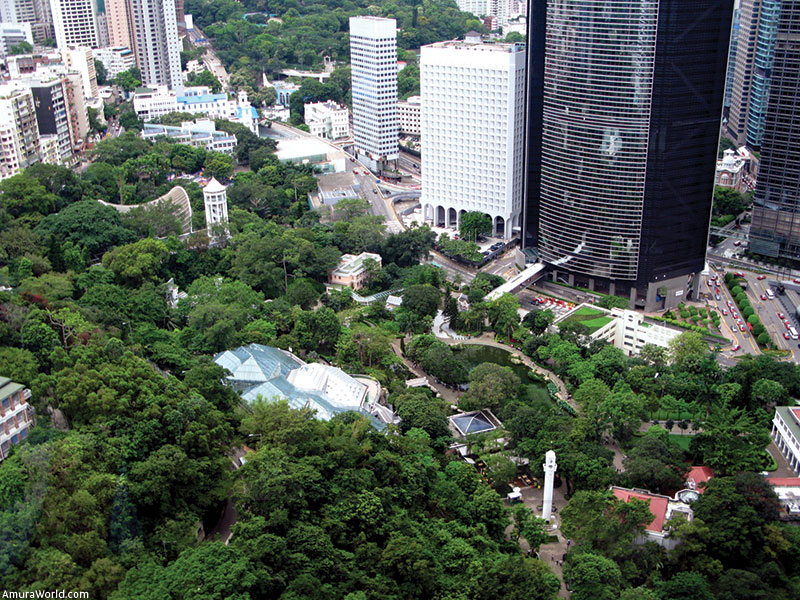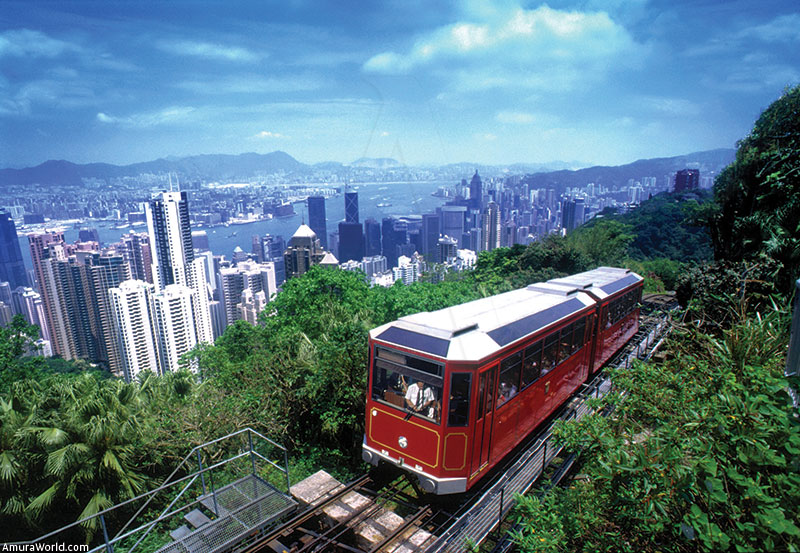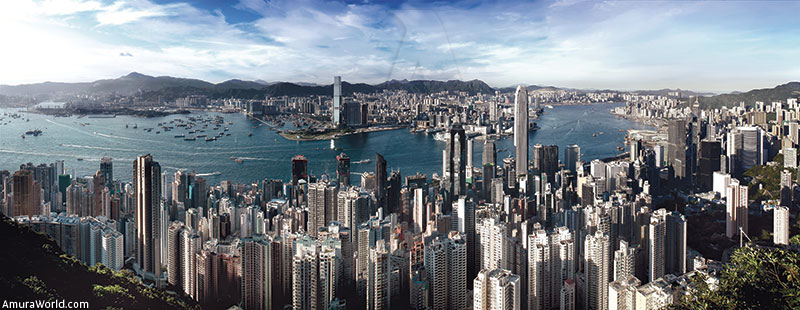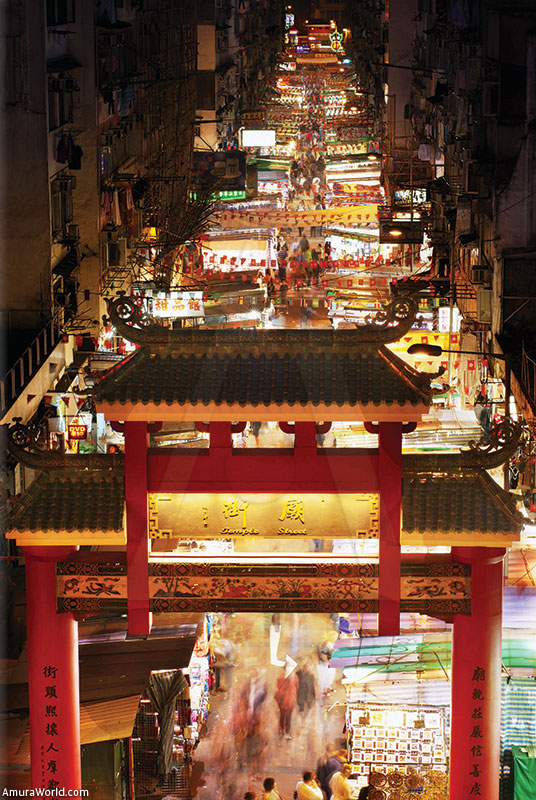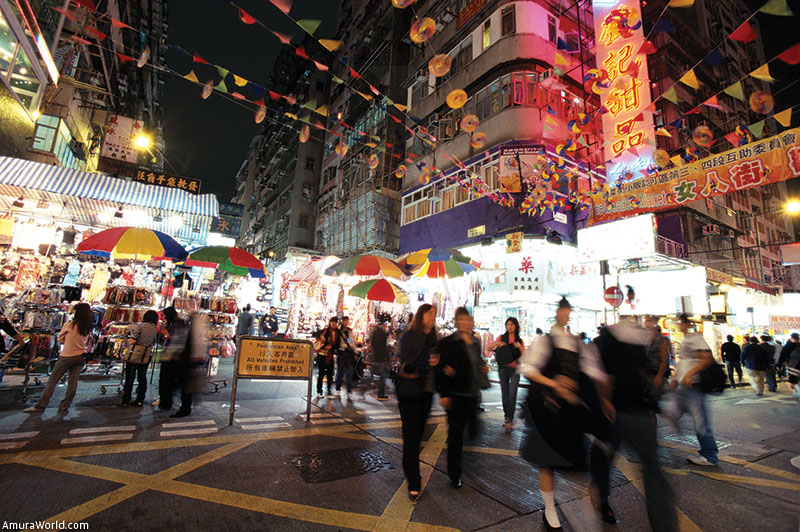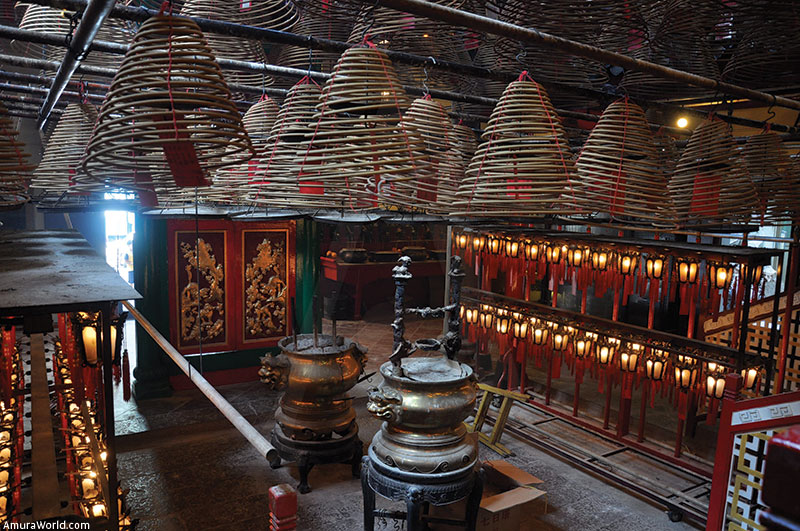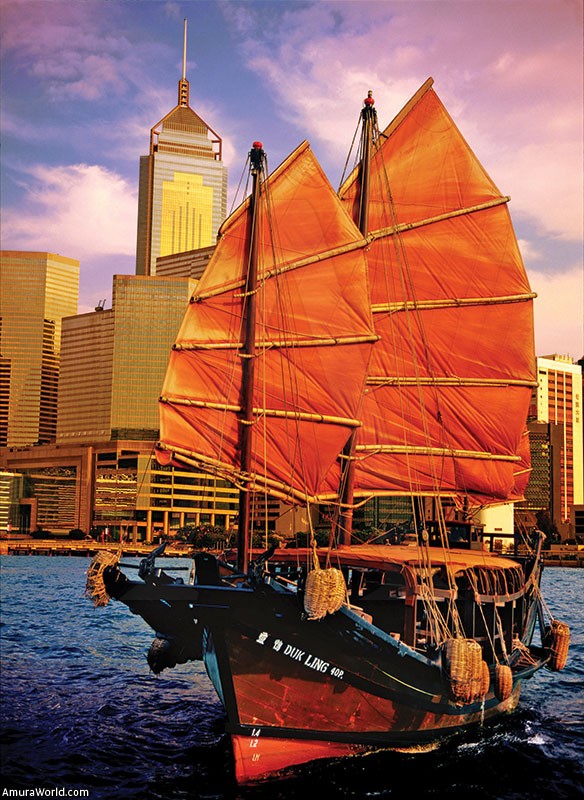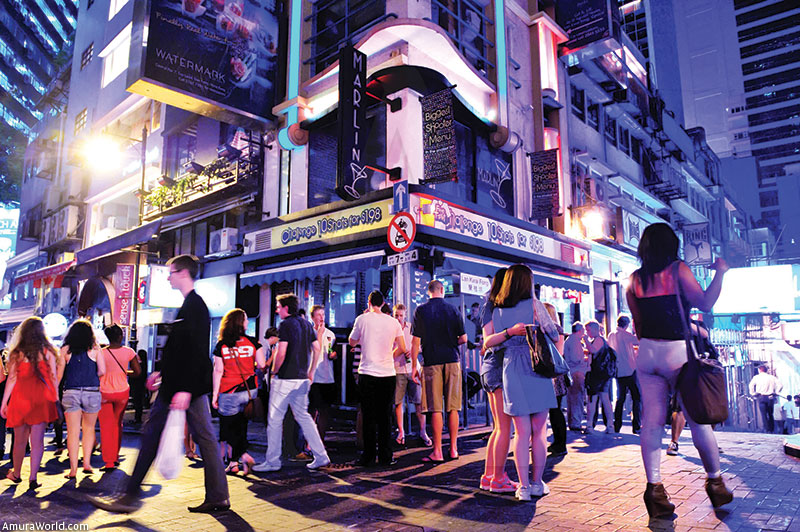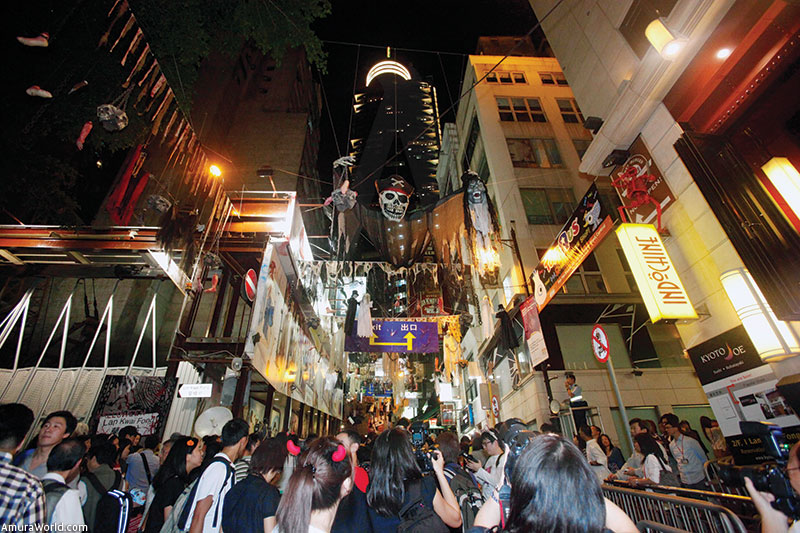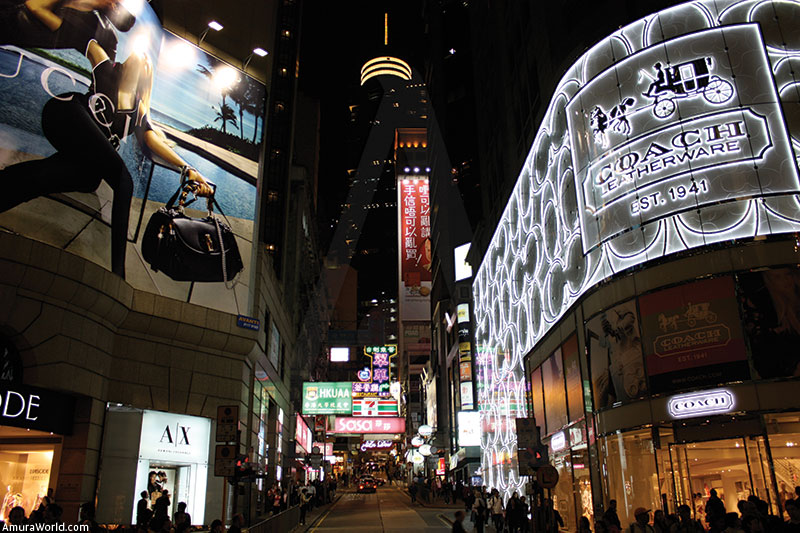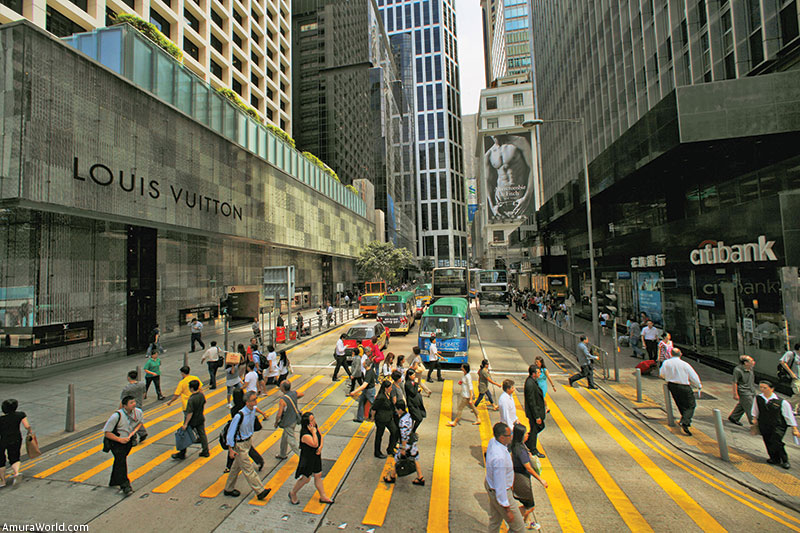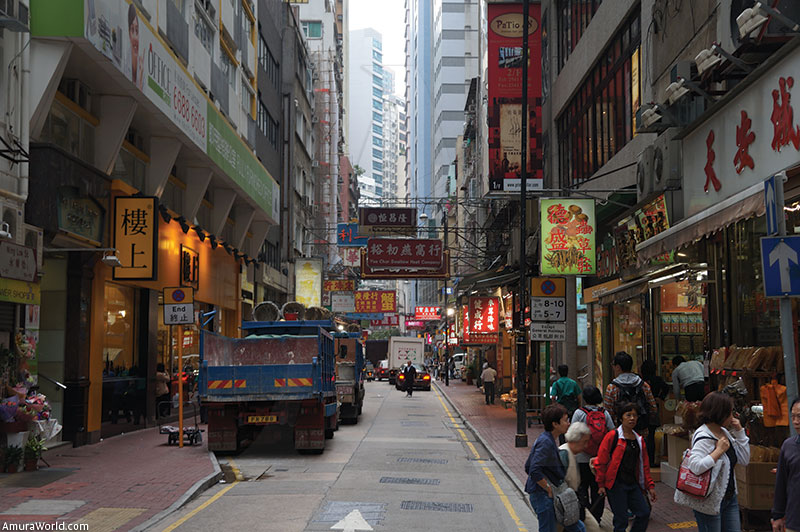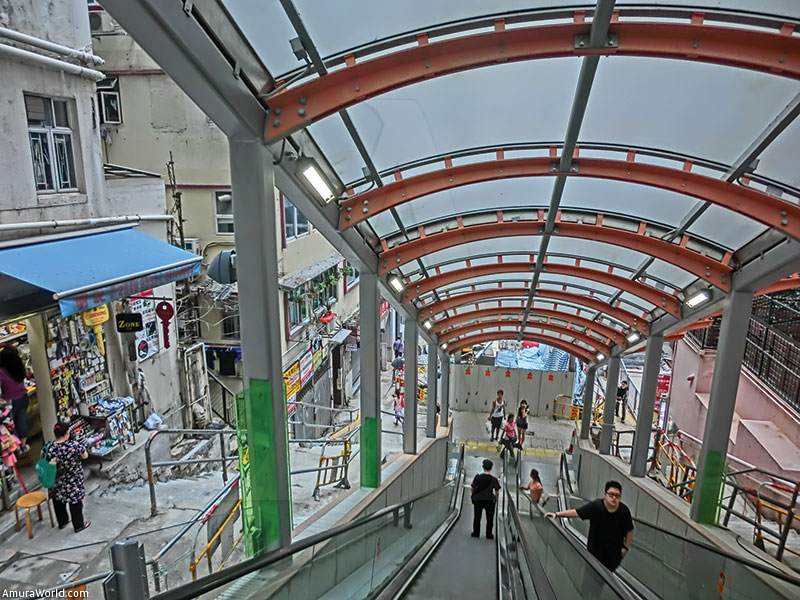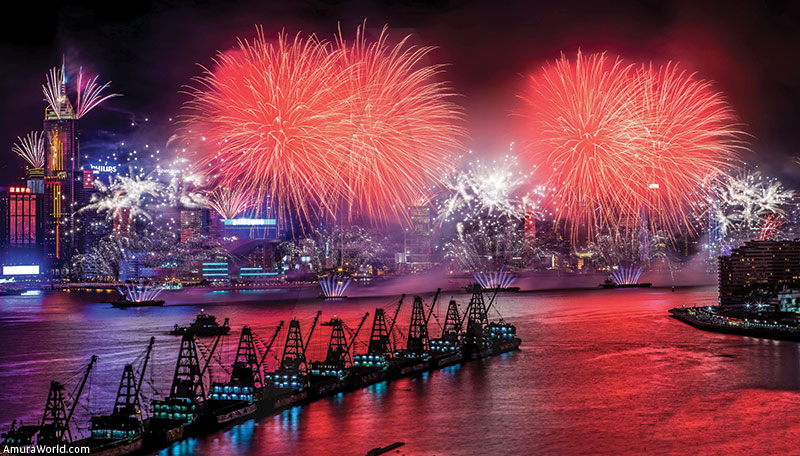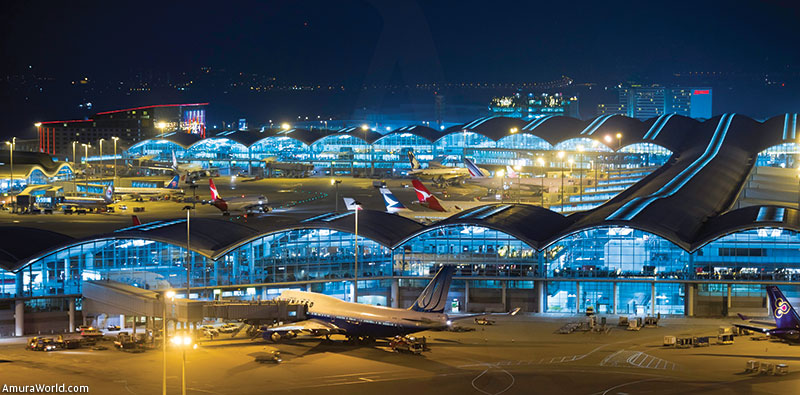A fusion of modernity and tradition
There are people who say that Hong Kong, from the air, appears like a crystal forest, its skyscrapers glimmer towards the sky and illuminate the arrival of visitors, giving them away an amazing kaleidoscope as well.
In order to enter this enigmatic country, one must understand the cultural heritage of its antecessors, the ones who inhabited the territory; it forged the resilience of its modern inhabitants, who have been able to adapt themselves and overcome the dramatic changes the history of this little island –located in front of the South China Sea—has undergone; the days preceding the transformation period as an enclave of the British Crown, the same as the days that passed at the transfer of sovereignty over the great Asian dragon.
With 1,070 km2 of a mostly mountainous surface, Hong Kong is small in terms of dimensions; however its position among the 10 top trade regions in the world, being one of the Asian-Pacific region financial centers and having the second stock exchange after Tokyo’s (companies quoted in it are valued at about US$2.97 trillion); just to point out some characteristics, places it among the greatest economies known as the Asian giants.
Linked with the above, thanks to the fact that its territory conserves its natural attractions, it has become a protected area; and together with its cosmopolitan, multicultural city’s modernity, it has become one of the destinations which has more and more tourists every year. Having a little more than a 6 million population, it receives more than 60 million visitors on a yearly basis.
Encounter between two worlds
Hong Kong inhabitants say that when one builds a great metropolis, modern and well planned, over the foundations of a millennial civilization, marvelous things happen. This assertion becomes an actuality when one visits this city; it is a crossroads of cultures, where all kinds of beliefs and thoughts live together, and each one is respected. In spite of ceasing to be a British colony ever since 1997, so as to be transferred to China as Hong Kong Special Administrative Region of the People’s Republic of China, it has its own currency (the Hong Kong dollar); despite its common language being English, due to the fact that Hong Kong is the hub of a great part of trade and finances in China, the tongue that gives its identity is Cantonese, distinguishing it thus from the rest of the Chinese population. One ends up witnessing to the civility of this city when realizes that he can be fined for eating or drinking in public transportation 1500 HKD; for smoking in public transportation 5000 HKD or for spitting on the floor 5000 HKD.
This is a city where the public transport is primarily used, having an excellent communication network –necessary– for most of its population have no car of their own. So, for example, there are several options to arrive in the city from the airport, such as the ferryboat, autobuses or subway, being the latter the fastest of all and the most expensive one: in 12 minutes one can arrive at the central district, where the International Finance Center and Hong Kong Convention & Exhibition Center are located.
Its subway is one of the most modern and cleanest, and has one of the best signaling systems, in the world; its tickets are bought from vending machines at the stations and their cost varies according with the journey. Regarding taxi cabs, there is price signaling at the airport according to the district destination; for example from the airport to Mongkok in Kowloon the cost is about 390 HKD; while on a bus, the price is 33.5 HKD per person.
In order to live it up in this destination, it is necessary to know it is divided in three zones: mainly Kowloon or the peninsular territory, the Hong Kong Island and the so-called New Territories that include the Lantau Island.
Skyscraper city
The region known as The Island, Hong Kong strictly speaking, the territory taken over by the English in 1840, is the most modern zone of this Special Administrative Region, where most of the international corporations converge. In the north, over Victoria Harbour, the most famous buildings forming the Hong Kong landmark are located. On its own, it is a strip stretching from the northern coast of the Hong Kong Island, towards Yau Tong in the east and up to Tsuen Wan along the Kowloon Peninsula.
The strip has 112 buildings over 180m height, the tallest being the International Commerce Centre, 484 height over the sea level; followed by the International Finance Centre, 416 m tall; then, the Central Plaza, currently the third place among the highest buildings, which, for a decade (1992 – 2003) flaunted the title of the tallest building of the city. Curiously, in this city, modernity and taste for skyscrapers also influenced religious architecture; as a sample it has the tallest church in the world, the Sky City Church.
Among the paramount sites in this region there is the Hong Kong Park; a haven of peace and tranquility; it has an aviary with over 80 species of birds; one of the biggest botanical gardens in southeast Asia, comprising all kinds of plants; an artificial lake where more than 100 species of dragon-flies have been classified; and the Hong Kong Museum of Art, the same as sports fields. Usually, white collar workers from the great international offices attend to it in order to have a break, and even to meditate, thanks to the 8 hectares of nature located in the central part of the financial zone, amid the bright skyscrapers of Hong Kong Island, offering thus a peculiar and attractive contrast in the middle of vegetation and asphalt.
Victoria Peak
It is possible to get up the Victoria Peak, also known as Mount Austin, aboard the Peak Tram, funicular railway that has been working ever since 1888, and services about 12000 passengers a day (with a schedule from 7:00 a.m. to 12 p.m., in intervals between 10 and 15 minutes) for more than 7 million tourists. This is the most touristic spot of the region since it plays the role of a natural scenic overlook from where the city could be appreciated in all its splendor. Due to the great number of visitors, on this 552 m height mount, the Peak Tower and Peak Galleria, two commercial and leisure centers, are located.Additionally, from the Sky Terrace, a scenic terrace, the best panoramic views of the region may be obtained. The starting point to go up the Victoria Peak is Lower Peak station, located at the Garden Road; easy to reach by walking from the MTR Central subway station. This visit, one of the best experiences that one might have, allows one to appreciate the main Hong Kongese skyline buildings.
A visit to the bustling markets is a must; that is where one can live through the intense city life, where the activity increases in the evening when people leave work and seize the opportunity to go shopping and have some food. In the Sheung Wan district, in Hong Kong Island, there are very interesting and quaint places, such as the bird market, the sea products market, the herbal medicines market and the antiques market.
The Western Market, located at Sheung Wan, the city’s center of activity, is a Victorian building covering an entire block; it opened for business in 1844. It was formed by two separate sections: north and south; though, later on, in 1906, the remarkable red-brick building was constructed. In 1991, after some restorations, it opened anew as a little souvenir shops commercial center and, currently, it is one of the scarce old edifices, in the middle of the tall buildings, thus becoming a tourist attraction.
Over the famous avenue, Hollywood Road, the Man Mo Temple is located; built in 1847 as an offering to the gods Man and Mo, the former the God of letters and the latter the God of war; it is another example of surviving historical constructions in the middle of the financial district skyscrapers, a part of significant complexes, such as the Lit Shing Kung where heavenly divinities are venerated; and the Kung Sor, in the western part of the temple, a crucial hall for community affairs in the past. In 1908, the Man Mo Temple was officially entrusted to the Tung Wah Group of Hospitals; eventually, in 2009, it was listed as a Grade I historic building. It still keeps its inner mystical aura; in the midst of hanging incense coils smoke one can appreciate Hong Kong inhabitants’ devotion.
Aberdeen Harbour
Located south of the Island, between Aberdeen and Ap Lei Chau, the isle, Aberdeen Harbour is a zone of fishermen who live aboard floating houses, giving it that quaint image –postcard like—superbly contrasting between a modern view, from the towering skyscrapers surrounding it, and the traditional Chinese style.
At daybreak and sundown, Aberdeen offers the best milieu to go for a boat ride over its peaceful waters; however, sauntering next to the sea is also a nice experience. In the summertime, a boat ride aboard the Dukling is recommended; this is a traditional fishing vessel built in 1950, restored in 1985, and currently a tourist attraction.
Here in the bay it is the world’s largest floating restaurant and one of the most requested, it is the Jumbo Kingdom, with capacity for over 2,000 people.
Kowloon Peninsula
Separated from the Island by a several hundred meter strait, the Kowloon Peninsula is the second greater zone in importance of the Hong Kong region; being an extension of the great strip of buildings that have given it fame as one of the most cosmopolitan regions worldwide; having a large number of places of interest, recognized as the foremost cultural district as well. A zone with great tourist allure, such as its marina promenade, the Avenue of Stars, where in keepsakes and prints, homage is paid to the Chinese movie actors who have left a mark, specifically from Hong Kong; in this promenade one can find Bruce Lee’s statue and Jackie Chan’s handprint; in addition to the modern building of the Hong Kong Museum of Art next to an observation deck so as to enjoy one of the best views of the city.
Every night, in this site, a relevant number of persons gather to be enchanted by a light and music spectacle, the Symphony of Lights; at 8 o’clock, on Hong Kong’s side, the skyscrapers get illuminated to music.
Over the marina promenade, one can find the Hong Kong Cultural Center, inaugurated in 1989, one of the foremost entertainment centers, where a variety of activities are shown: world class concerts, opera, dance, theater plays, also musicals, movie projections, conventions, conferences and expositions.
Close to the marine promenade there is the Nathan Road, one of the liveliest commercial avenues on account of which it is known as the Golden Mile, where the most relevant brand stores are present, the same as little bazaars. In the same manner, the Jordan and MongKok districts are ideal to find all kinds of souvenirs, from t-shirts to purses and suitcases, and to international brands sports’ products.
Other interesting sites to visit are: the Hong Kong Conventions and Expositions Center, one of the biggest in the world, a sculpted crystal and aluminum building, its architectural structure representing a sea bird taking off; the Golden Bauhinia Square or Handover Monument sculpture that represents the Hong flower, a present from the Chinese government when Hong Kong was transferred to China, in 1997.
The SoHo, a cosmopolitan and modern neighborhood, where most of the bars, restaurants, art galleries and antiques are located; the Mid-Levels Escalator, the longest electric staircase in the world; built in 1993 as an auxiliary via to access the mount abodes, 800 meters long, a Guinness World Record. It is said that the residents refused to build two staircases (in order to go up and to come down), so its functioning in the mornings is from 6:00 to 10:00 a.m. to go downstairs and from 11:00 a.m. to 23:00 p.m. is to come upstairs.
Founded in 1884, the Hong Kong Jockey Club is a good place for horserace adrenalin tasters; it represents one of the oldest institutions in the island. At the sheer heart of Hong Kong, it is an interesting place to visit in order to see Hong Kong inhabitants and Continental Chinese’s passion for betting.
Symphony of lights
Every night, Victoria Harbour is illuminated by neon lights and laser beams synchronized to the music beat, the Symphony of Lights, a multimedia show that makes a visit to Hong Kong something very special
In itself, the view of the port is dazzling enough; however, watching the (so called) “World’s Largest Permanent Light and Sound Show”, involving more than 40 buildings in each side of the harbor with multicolor laser beams and searchlights, synchronized to the music and a narration celebrating the zest, soul and diversity of Hong Kong, results in an unforgettable multifaceted show; lasting 13 minutes, every night at 20:00 hrs., with a Guinness World Record; it takes on 5 different themes: Awakening, Energy, Heritage, Partnership and Celebration. The experience of relishing this dazzling show of lights is unforgettable, on board of a traditional Chinese reed vessel.
Mega-construction
The Hong Kong International Airport, one of the busiest not just of Asia but of the world, was inaugurated in 1998 so as to replace the old Kowloon Airport. An engineering masterpiece, built over the territory of Chep Lap Kok; it was built over two little isles at the northern coast of the Lantau Island. Transformed into a 2.5 km platform; it counts kilometers of tunnels; the largest passenger station; the most innovative civil engineering technology, and a long list of features. Known as Chep Lap Kok airport as well, it was laid out for 35 million passenger capacity and 3 million ton freight; and a total capacity of 87 million passengers and 9 million ton freight; currently designed according to the rules of feng shui, being one of the most attended airports of the world.
Text: Ana María Morales ± Photo: HONG KONG TOURISM BOARD / HONG KONG TRADE DEVELOPEMENT COUNCIL / MRANOLA / ROD SMITH / JAWEIR ASOCIATES TSE JAO / JAO MIN / HRS / ARCHIKEY / svetik / EBD / APS / CUHK / RANDOM PHOTO / Jose mario franco AS / msid / statick / VLADIMIR SHUAN / FIT PRINT / AOS / iq / shutterstock / DESIREE KOHIN / FORBES / 10WL / ROBERT BARAKETT / TONU FROCU / KKTDC / TANGERNE / scott wu / KENZO JAO / ARCHDAILY / 360 GRADOS / FLICKR

